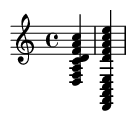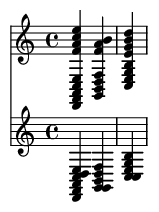Summary:
The minor ninth chord (m9) is a lush, five-note harmony that infuses the moody quality of a minor seventh chord with the expressive color of a major ninth. This unique combination creates a sound that is simultaneously melancholic and hopeful, making it a cornerstone of jazz, neo-soul, R&B, and modern film scores. This guide will deconstruct the m9 chord, exploring its theory, application, and the voicings that bring its sophisticated character to life.
Keywords:
minor ninth, m9 chord, extended harmony, jazz chords, music theory, neo-soul harmony, chord function, piano voicings, chord progressions
Introduction: What is a Minor Ninth Chord?
In the world of extended harmony, the minor ninth chord is a true gem. It takes the foundational sound of a minor seventh chord and adds a major ninth interval, creating a complex emotional landscape. The tension between the somber minor third (b3) and the brighter major ninth (9) produces a sound that feels introspective, rich, and deeply expressive. It's the sound of a late-night jazz club, a soulful R&B ballad, or a thoughtful cinematic moment.
Chord Definition and Construction
A minor ninth chord is built by stacking thirds on top of a root note. It consists of five distinct notes: the root, a minor third, a perfect fifth, a minor seventh, and a major ninth. This structure gives it the intervallic formula 1-b3-5-b7-9.
Building a D Minor Ninth (Dm9)
Let's construct a Dm9 chord step-by-step:
- Root: The starting note, D.
- Minor Third: Add a minor third (3 semitones) above the root: F. (This gives us a D minor triad: D-F-A).
- Perfect Fifth: The fifth is 7 semitones above the root: A.
- Minor Seventh: Add a minor seventh (10 semitones) above the root: C. (We now have a Dm7 chord: D-F-A-C).
- Major Ninth: Finally, add a major ninth (14 semitones) above the root: E. (This completes our Dm9 chord: D-F-A-C-E).
The following example first shows the Dm7 chord, and then the full Dm9, so you can hear the addition of the ninth.

Harmonic Function and Modal Context
The minor ninth chord naturally appears in several harmonic contexts. Its function changes depending on the key and mode.
- ii Chord in a Major Key: The m9 chord's most common role is as the supertonic (ii) chord. In the key of C major, the ii chord is D minor. Building a ninth chord on D using notes from the C major scale (D E F G A B C) gives us D-F-A-C-E—a perfect Dm9. This makes the ii-V-I (Dm9 - G7 - Cmaj7) the quintessential jazz progression.
- i and iv Chord in Dorian Mode: In modal jazz, the m9 serves as a stable tonic chord. In D Dorian (D E F G A B C), the tonic (i) chord is Dm9. It can also function as the subdominant (iv) chord, Gm9. A common Dorian vamp moves between the i and IV chords.
- i Chord in Aeolian Mode: In the natural minor scale (Aeolian mode), the tonic (i) chord is also a minor ninth. For example, in A Aeolian (A B C D E F G), the tonic chord is Am9 (A-C-E-G-B).
Example: The Classic ii-V-I Progression
Listen to how the Dm9 resolves smoothly to G7 and then to Cmaj7. The voice leading between the notes creates a seamless, satisfying sound.

Essential Voicings for Keyboard and Guitar
How you arrange the notes of a chord—its voicing—is crucial. Since m9 chords have five notes, playing them in root position can sound dense or muddy. Musicians use clever voicings to open up the sound.
Piano Voicing Techniques
- Rootless Voicings: This is a key technique in jazz. For a Dm9, the pianist can omit the root (D) , which is usually covered by the bass player. The remaining notes (F-A-C-E) form an F major seventh chord (Fmaj7). So, a common shortcut is Fmaj7 / D bass = Dm9. This creates a modern, open sound.
- "A" and "B" Voicings: These are standard two-handed voicings that prioritize smooth voice leading.
- A Voicing (3-5-7-9): Left hand plays b3 and b7. Right hand plays 5 and 9. For Dm9: LH (F, C), RH (A, E).
- B Voicing (7-9-3-5): Left hand plays b7 and 9. Right hand plays b3 and 5. For Dm9: LH (C, E), RH (F, A).
- Spread Voicings: Spreading the notes out creates a rich, atmospheric texture. For Dm9, a beautiful spread voicing is (D-A) in the left hand and (C-E-F) in the right hand.
Example: Standard vs. Rootless Voicing
The first measure shows a standard, close-position Dm9. The second measure shows a common rootless voicing, highlighting the Fmaj7 in the right hand over the D in the bass.
Guitar Voicing Techniques
On guitar, it's often impractical to play all five notes. Guitarists typically omit the perfect fifth (and sometimes the root) to create more manageable shapes. Here's a common and comfortable Dm9 voicing:
- Fretting: x-5-3-5-5-x (String: E-A-D-G-B-e)
- Notes: x-D-F-C-E-x (Root, b3, b7, 9). Notice the fifth (A) is omitted.
Icons of the Minor Ninth Sound
The m9 chord's sound is defined by the artists who mastered it. Herbie Hancock, especially on albums like "Head Hunters," used m9 chords to create funky, atmospheric textures. Stevie Wonder's songwriting is filled with lush m9 chords, which became a hallmark of 70s soul and R&B. In modern jazz and neo-soul, artists like Robert Glasper and D'Angelo build entire sonic worlds around the smooth, complex qualities of the minor ninth.
Chord Substitutions and Variations
Understanding the m9 chord opens the door to its relatives, which offer subtle shifts in color:
- Minor 11th (m11): Adds an eleventh (1-b3-5-b7-9-11). For Dm11, this adds a G. Often, the 9th is omitted to avoid clashing with the b3, resulting in a voicing that feels more like a G7sus4 over a D bass.
- Minor 6/9: Replaces the minor seventh with a major sixth (1-b3-5-6-9). This chord sounds brighter and more stable than a m9, often used as a final tonic chord in minor key jazz tunes.
- Minor (add9): A simple minor triad with an added ninth, but no seventh (1-b3-5-9). This creates a more open, less "jazzy" sound, perfect for pop ballads and film music.
- Half-diminished 9 (m9b5): Flattens the fifth of a m9 chord (1-b3-b5-b7-9). This is the diatonic vii chord in a major key and has a much more tense, unresolved quality.
Fun Facts and Trivia
The minor ninth chord is sometimes called the "midnight chord" in jazz circles due to its frequent use in dark, moody ballads. Its ability to create a sense of floating suspension has also made it a favorite in ambient music and lo-fi hip-hop, where producers often sample m9 chords from old jazz records to create a chill, nostalgic vibe.
Conclusion: Your Next Step in Harmony
The minor ninth chord is far more than a collection of notes; it's a gateway to harmonic depth and emotional expression. By understanding its structure, function, and voicings, you can add a layer of professional sophistication to your music. Whether you're composing a jazz standard, producing a neo-soul track, or simply exploring new sounds on your instrument, mastering the minor ninth chord will elevate your harmonic vocabulary and unlock a new world of creative possibilities.
References:
Levine, Mark. (1995). The Jazz Theory Book. Sher Music Co.
Miller, Ron. (1996). Modal Jazz Composition and Harmony. Advance Music.
Hancock, Herbie. (1973). Head Hunters. Columbia Records.
Wonder, Stevie. (1976). Songs in the Key of Life. Tamla Records.
